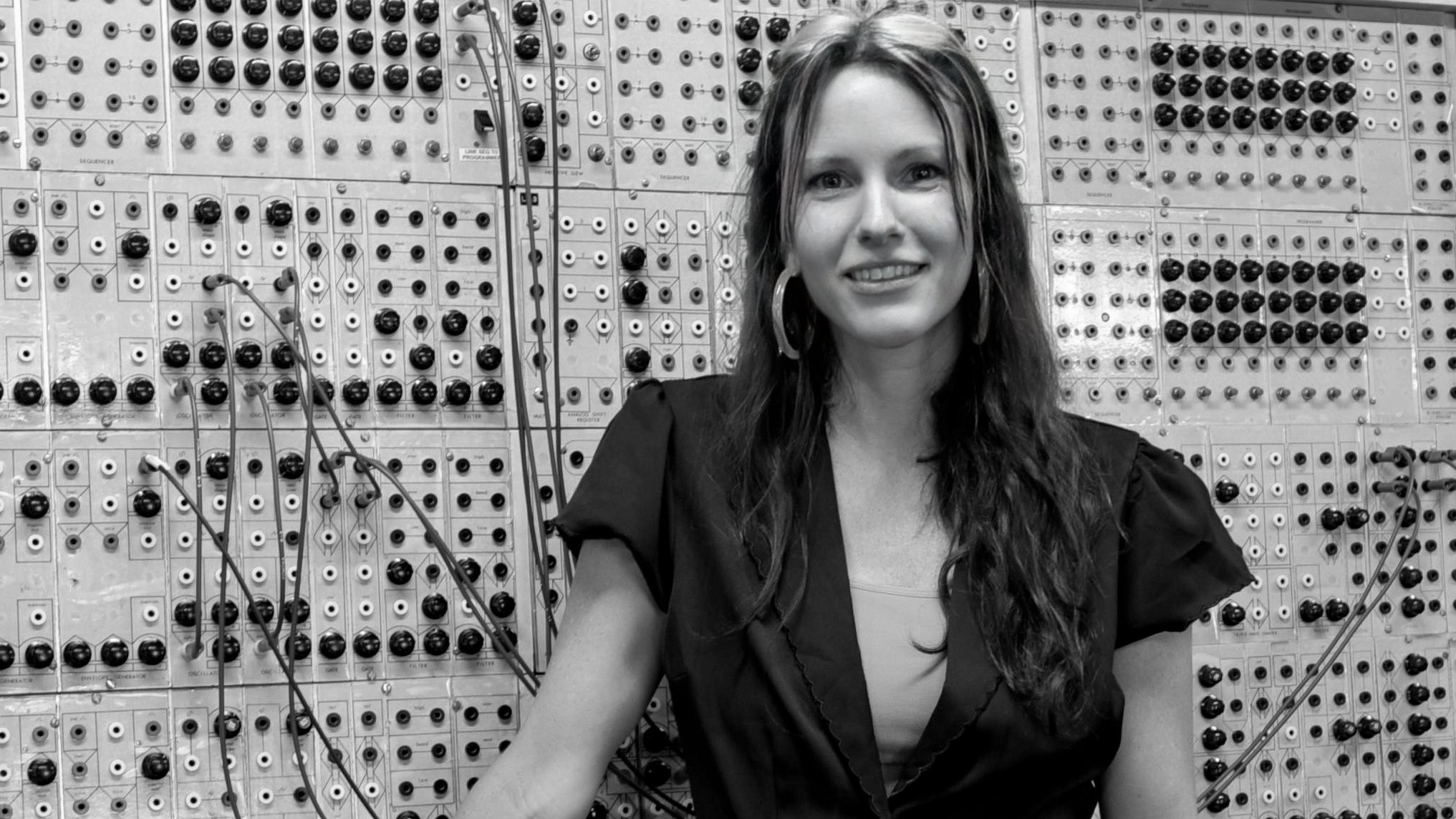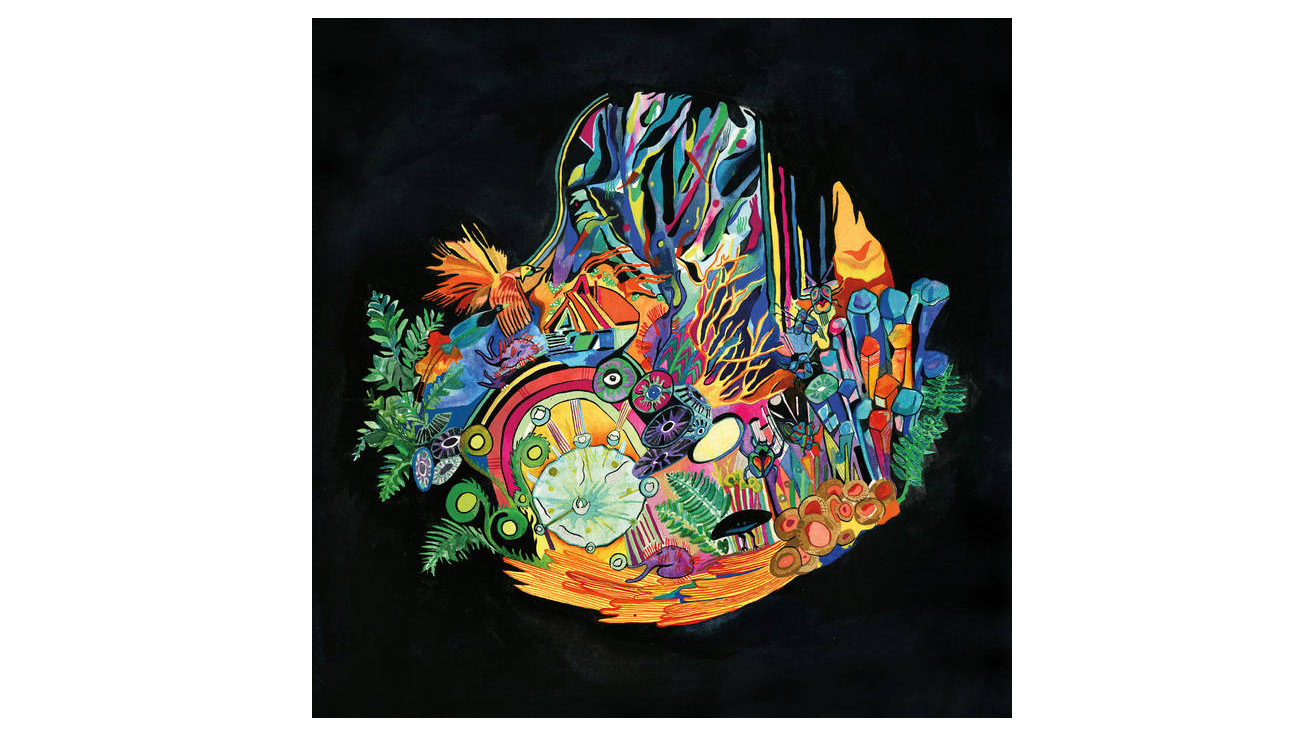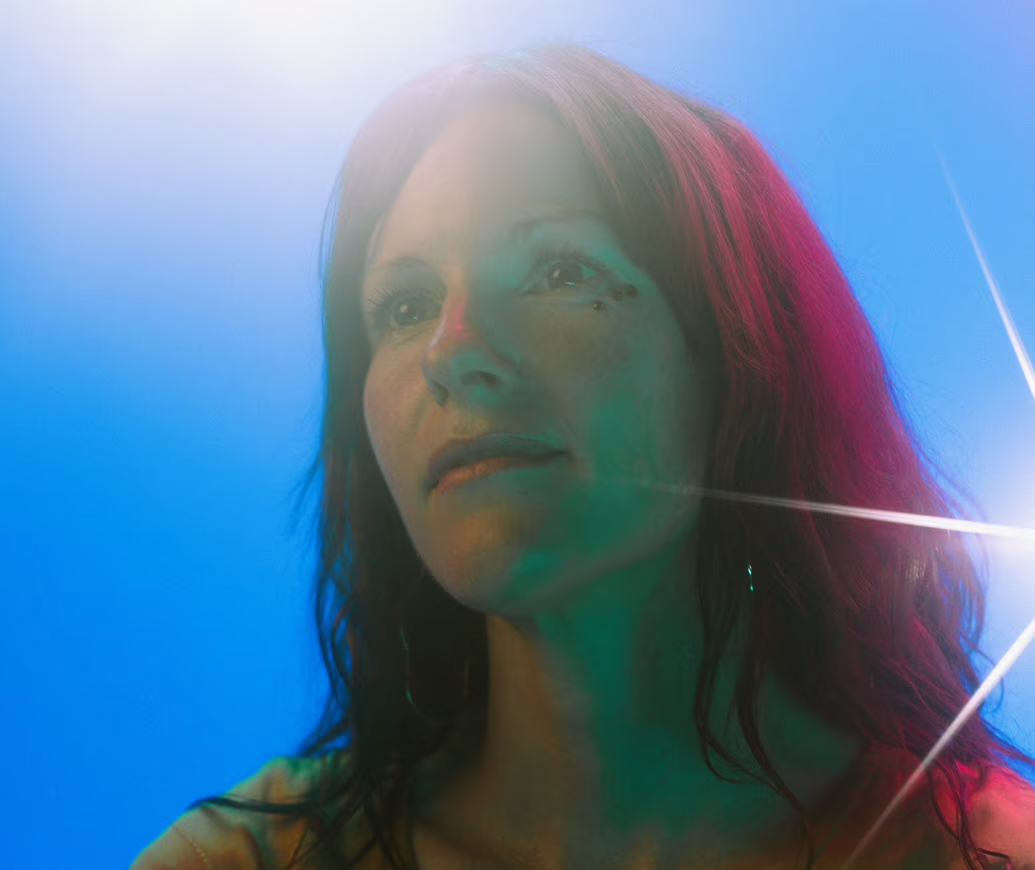“Okay, if I were to meet David Bowie, would I feel okay about showing David Bowie this album?”: Modular synthesist Kaitlyn Aurelia Smith on making meditative electronic masterpiece, Ears
The Californian artist on the live Buchla jams that created her breakthrough album

When it comes to creating albums, Kaitlyn Aurelia Smith likes to uncover the story as she’s making it.
“I usually don't know the narrative until the end of the project,” she says. Beginning, as she likes to do, by purging herself of bad ideas, she lets the plot lines reveal themselves by 'failing' at making them.
“Before I start, I usually have a whole process that I go through of cleaning out my creativity, where I just let myself, quote, unquote, fail for a while,” she says. “Where I just let myself, every day, create something without the intention of keeping it.”
As the album making process unfolded, the parts she kept began to tell the story of how we listen to life itself. The wonder of nature around us. And the act of experiencing sound through these magical noise receptors attached to the sides of our heads – the ears of the album's title.
“It’s just highlighting what an incredible thing it is that we’re able to do with our ears," says Smith. "What an incredible intelligence that is on our body. Because, when I learned about the ears, like a system, it’s really remarkable – what they do in our body; our sense of balance is tied to it. I just love that. And the tiny hairs are so crucial. It's like the tiniest things are so crucial.”
The lush, verdant, sprawling microscopic sonics that run across the album bristle with excitement and movement. Thanks in no small part to the spontaneous way in which they were played and explored by Smith with her Buchla Music Easel and the musical matrix system she’d built on her Novation pad.
“For this album I first came up with how I was going to play it live,” she says. “And then record the whole thing, like playing a practice session. I worked at it like that for a few months, just figuring out how I would play it live. Then I just pressed record. There were limitations that I had at that time with my live setup – I wanted it to be really light, so everything was feeding into each other and it blended naturally.
Want all the hottest music and gear news, reviews, deals, features and more, direct to your inbox? Sign up here.
"I would practise for my live sessions without any notes. I would practise the same part over and over again until it's in my muscle memory. Then I move on to the next thing. Also, at the time, I had a lot of anxiety about performing. I don't have it anymore, but my way of working through it was trusting muscle memory. I just noticed whenever I would get on stage, I would go blank. And so, even if I have notes, I felt like I couldn’t read them."

In the studio with Kaitlyn Aurelia Smith
"I had a Buchla Music Easel, a BEMI LEM218, and a Teenage Engineering OP-1. Then I sampled a lot of woodwinds and had a keyboard controller to play them. I would also sample my voice, so I could play it like an instrument too.
“I had a matrix system that I built on one of those Novation pads where I turned off the mapping and made different pages for how I wanted to apply effects to everything, so that I didn't have to have a lot of effects pedals. I could just have this matrix system where the computer was turning on and off the effects as I was pressing them. The computer would be over to the side, so I didn’t interact with it.
"There was some delay. But, I don't actually like reverb. The Buchla Music Easel was the main thing that I played and it’s still the main thing that I play live today. It's just so easy to travel with it, and I know it so well. I've tried switching to different setups. I had a Eurorack system for a while that I played, but it didn't last. It wasn't as durable as the Easel, so I went back to that.”
Ears track-by-track with Kaitlyn Aurelia Smith
1. First Flight
"This one, for me, is about novelty. Like, the synapses that happen when we're experiencing something for the first time, and just all the tickles that happen. I wanted it to feel really exciting.
"It was always going to be the opening track, because I was imagining what I would play live, so I wanted that to be the first thing that people would hear. I find it’s a really different thinking experiment to be like, ‘What do I want to play live?’ versus, what do I want someone to hear first when they're just in their house."
2. Wetlands
"This was all about when you sink deeper into what's already there in your world, as more gets revealed and heightened. I really wanted to play with what it would feel like to have these sounds that are there from the beginning, but then draw your attention in more as the track goes on.
"I was using my live setup. I used all the same kit on every song. In general, I really like to play synthesisers like I would an acoustic instrument. I studied classical guitar, and there's so much nuance to how you approach each note, and how you leave it. I think that's something that I feel really passionate about, in general, with synthesis. Like, how important it is to energetically approach each thing that you're going to play.
"It’s all about believing that people can feel that energy in the space between the notes"
"It’s like the way that you’d walk up to an animal. It'll react to you differently if you’re just like, ‘Hey!’ versus if you’re preparing ahead of time and showing it respect. I know that sounds like I’m really personifying the synthesiser, but I just really believe in that for all instruments.
"I guess it's more of a classical approach, in general, where you're thinking about all of the in-between parts; how did you leave that last note to get to the next one? It’s all about believing that people can feel that energy in the space between the notes.
"Also, I just really love sound design. I was doing a lot of sound design for work, then, so it was just naturally coming out of me."
3. Envelop
"I have a lot of admiration for artists like Burt Bacharach and Yma Sumac, who blend more song-based jazz and really lush, cinematic orchestration with retro synthesis. I feel like Stevie Wonder does a good job of it.
“I was going more for a ‘love song’ feeling. I would have made this in the daytime. I'm never a late night creative. I'm always a very early morning person. Sometimes I make my music in the morning time, or sometimes it's nine-to-five. It’s funny, I’m almost like a ‘Type A creative’. I have so much spontaneity and can relax into the creative process, but I also love to be super organised and productive."
4. When I Try, I'm Full
"For this one, I started doing a technique that was new to me at the time where I would have a bunch of MIDI going out of the Buchla [Music Easel]. Meaning, taking what I was playing on the Buchla, and using that information to create MIDI that was connected to the other instruments. I made it so that parts of the keyboard are actually muting some of the instruments. It was a really fun inverse playing style for me. I knew during that album that I wanted to try this technique.
"It’s something I learned from watching magicians. My brain would only relax if I didn’t make the correlation between what they're doing with what I'm seeing. I knew, in my live setup, when I did certain playing motions, it didn't necessarily always correlate with the sound. For different songs, I made different techniques, where instead of me hitting the keyboard and it playing a sound, it’s maybe the inverse, where it's actually silencing the sound.
"That was really exciting, because it brought novelty to it like, ‘Oh, this is going to create different expectations to what I've done before’. That really relaxes my brain when I'm playing live. It was like my left hand was playing the notes, playing the actual music, and then my right hand would go between playing them or cutting them off. That was fun."
5. Rare Things Grow
"This one is definitely leaning into sound design, where I just want to create ecosystems with sound. The concept of ‘aliveness’ is a really big inspiration for me. I think that isn't just bound to natural things. I think it can flow through anything
"For inspirations, the only other artist that I kept trying to embody during that album was David Bowie. I’d have this exercise where I would be like, ‘Okay, if I were to meet David Bowie, would I feel okay about showing David Bowie this album?’
"Not like, do I think this is good enough for David Bowie's taste? Just, how would I feel about it? That was a really fun indicator for me to know if [the music] was done yet or not. It wasn't like I was going for, ‘This is so good, I'm going to show it to David Bowie!’. It was just, ‘Do I feel okay about this?’.
"Also on this track I was playing a lot with saxophone textures. I have a friend who I would sample playing, and then I would play that on the keyboard. Or, I would use it as a seed for granular synthesis, or run it through the synthesiser."

6. Arthropoda
“I feel like this song and Rare Things Grow were both capturing that wonderment feeling of, ‘Oh my gosh, there's so much happening around us all the time!’ I think for Ears, the theme in general was about encapsulating that ‘wow’ feeling. Like when I listen outside, or when I just listen in general, it doesn't get quieter, it gets louder. Just being conscious of all that’s around you. Every sound has so many sounds in it, and they’re just endlessly unfolding. It’s an awe-inspiring feeling, for me.
"I also like to stretch my voice in real time. Sometimes I’ll do granular synthesis in real time, where I'll loop up my voice and then stretch it and make it more into a palette, or like a texture.”
7. Stratus
"I had a lot of admiration for clouds at that time. One of my favourite activities was to stare at the clouds moving and get to the other side of boredom. Meaning, I wouldn't identify it as boredom, but just get to emptiness through watching the clouds and how they continuously felt like this thing, that was there, but you could never grasp.
"There’s flute in this track as well. I stretched and manipulated a lot of different woodwinds. It’s such a beautiful instrument. I think it's so close to a lot of birdsong.”
8. Existence in the Unfurling
"This was all about wonderment, too. I feel like it’s the summary of what the whole album is about. Which is just, ‘Wow! I can't believe what I've been missing when I wasn't listening’. When I'm listening, I can't believe what's there – it’s like there's so much unfurling. It’s like a fern, opening up.
"This one has a four part section to it, and it's kind of taking turns going between my perspective to what am I singing, to that perspective of, ’What are we all like? What are we both together, making?’ And then what's even further, zoomed out of it. I wanted to leave the listener with this sense of tension and spaciousness.”
"In terms of music making right now, I’ve just come back from a tour with Glass Beams, Hot Chip and RY X, opening up for them and playing some festivals. I have a new solo album coming out in 2025.
I also have a collaboration album with Joe Goddard from Hot Chip that’s coming out in November. I just finished a film score that's on all of the streaming platforms called Omni Loop, about a woman who discovers a black hole growing in her chest.
Then I curate a compilation series on an imprint that I started called Touchtheplants, where I give a bunch of musicians a prompt to make a track. The most recent one was called Archetypes, and the prompt was, ‘If you weren't a musician, what would you be, and what would it sound like in a song?’ It's really fun for me, because I just get to be like, ‘Here's the seed, I want to hear what you do with it’.”
Follow the latest from Kaitlyn Aurelia Smith at her official site









